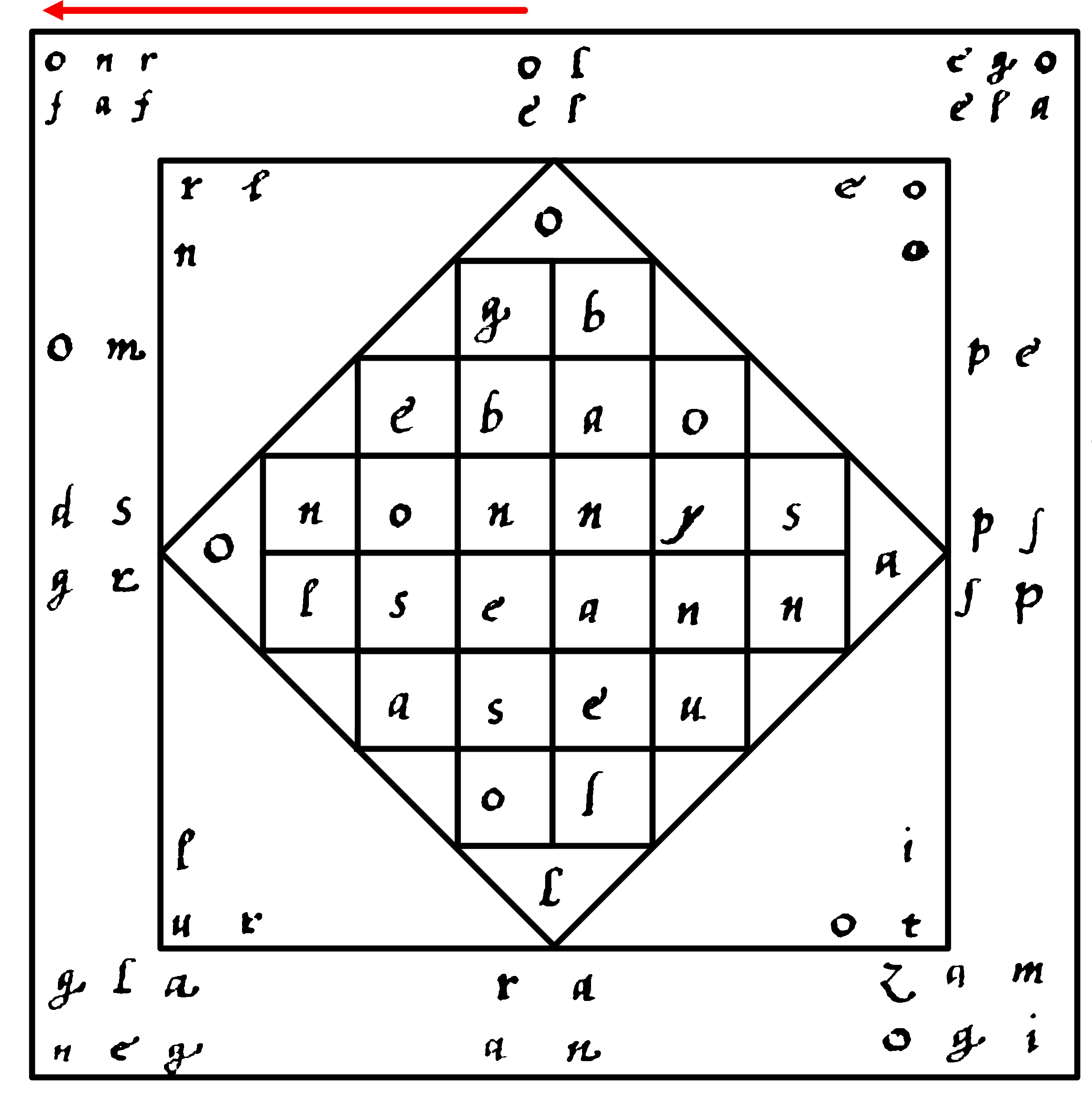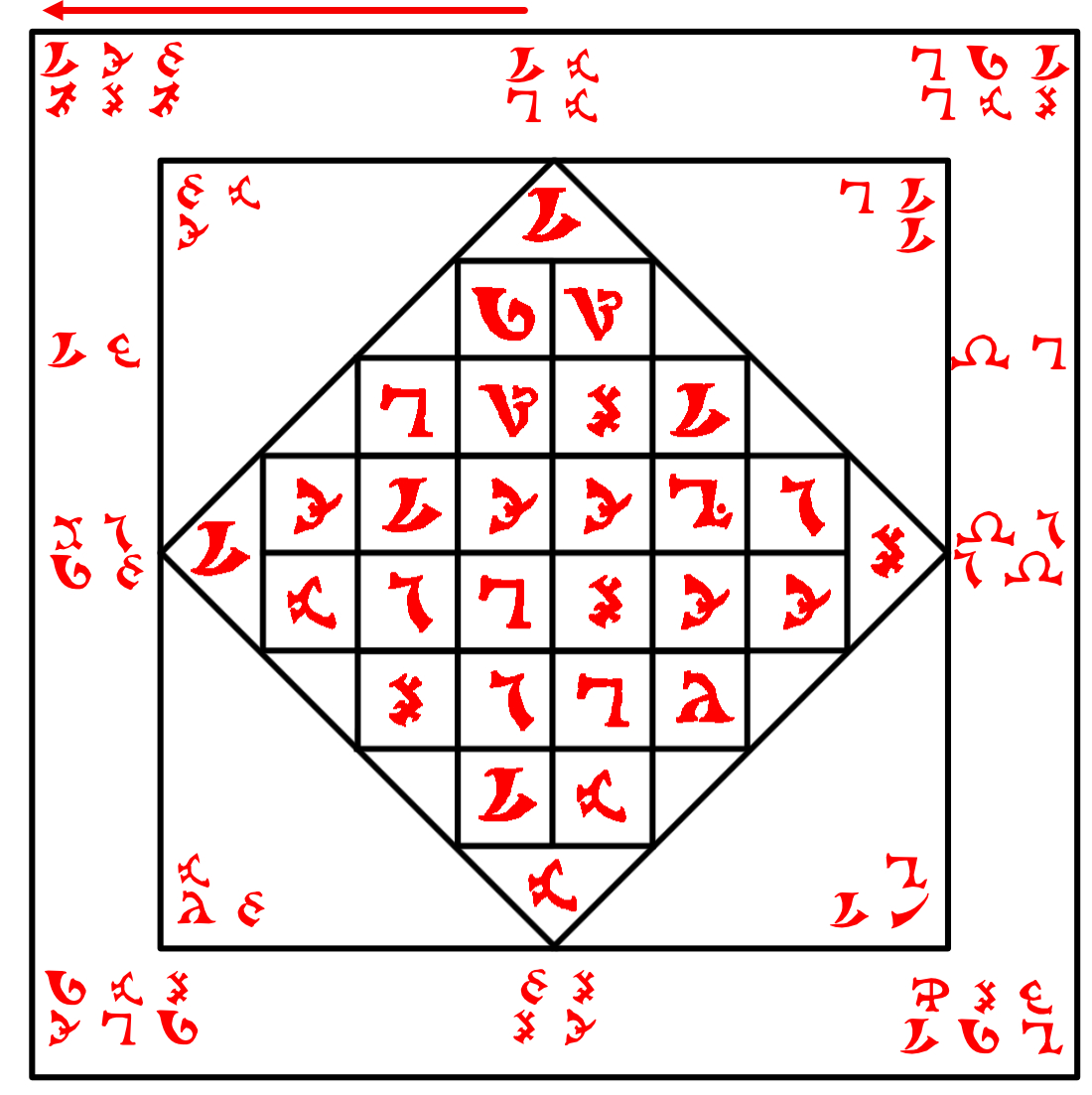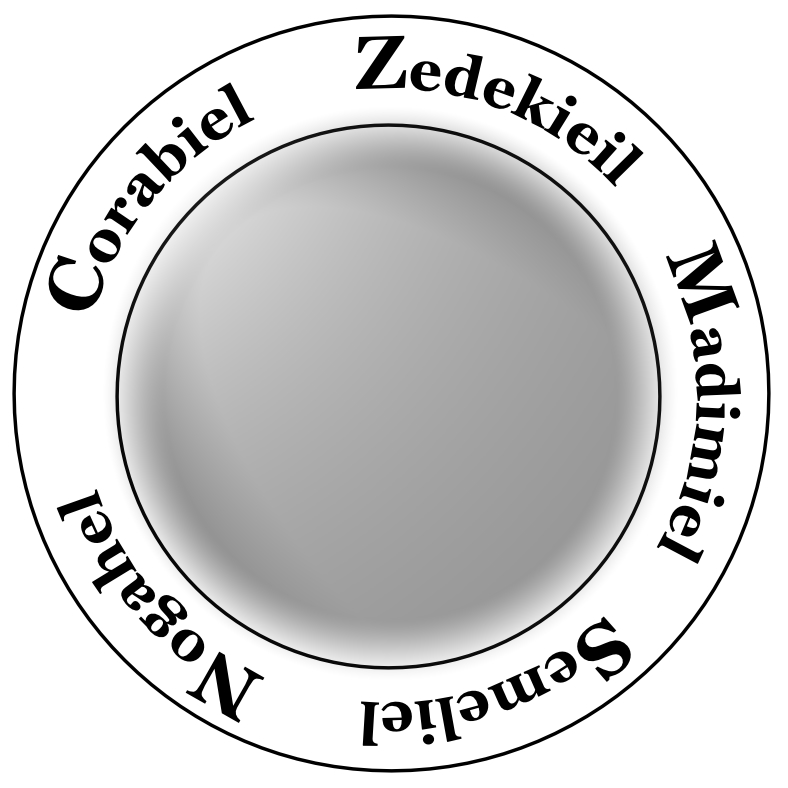The Holy Table
John Dee's "Holy Table" is the center of his heptarchic ritual practice. He also refers to it as his "practising table" or "table of practise". The overall design may have been inspired by the Almadel, or Sememphoras tables, both of which were used for spirit communications.
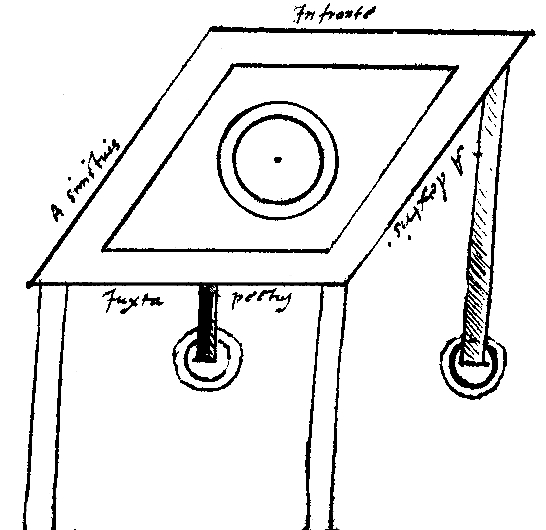
Dee's drawing of his holy table, from Sloane ms. 3188, fol. 10r, from scrying session recorded on March 10, 1582.
Meric Casaubon included a drawing of Dee's table in his True and Faithful Relation,1 which Elias Ashmole compared with the actual artifact which he had seen in John Cotton's library;2 Ashmole said it was faithful to Dee's original table.
See also Elias Ashmole, "The dimensions of Dr. Dee’s Holy Table, preserved in Dr. John Cotton’s Library".
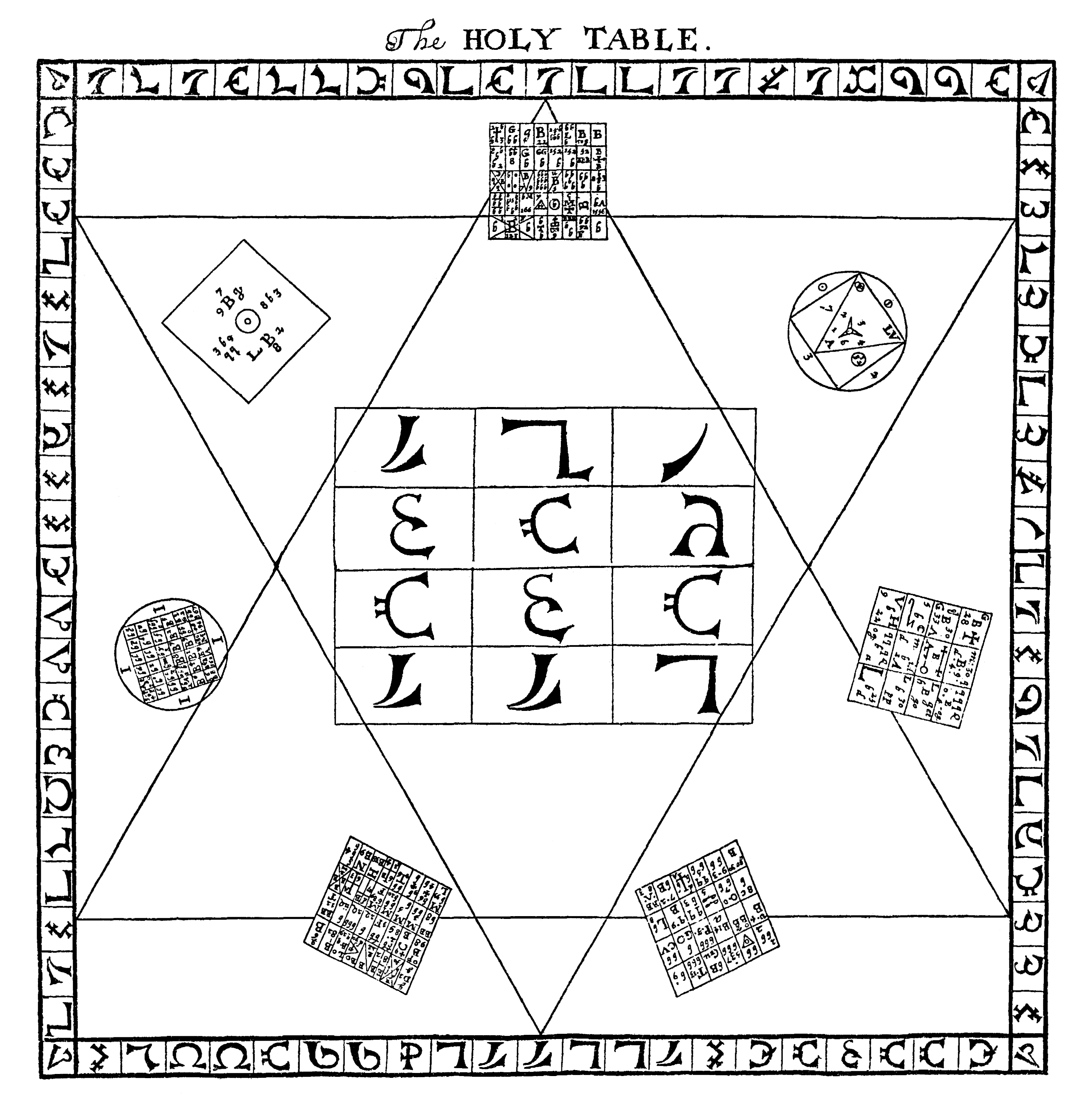
1. Casaubon, Meric, A true & faithful relation of what passed for many yeers between..., London, 1659, image 94.
Compare also the marble copy of the table at the University of Oxford, dated mid-1600's.
2. See Dee, John, and Joseph H. Peterson. John Dee's Five Books of Mystery: Original Sourcebook of Enochian Magic: from the Collected Works Known As Mysteriorum Libri Quinque. Boston, MA: Weiser Books, 2003, p. 23.
Since then, some controversy has arisen over whether the letters are transposed correctly in the Casaubon engraving. Spoiler: I believe the Casaubon engraving is correct, with two small but important caveats (see below). For more discussion on the sequencing and its critics, see Burns and Moore (2014).3
3. "How to Sequence the Perimeter Letters on John Dee and Edward Kelley’s Holy Table" Journal of the Western Mystery Tradition Vol. 3 No. 27, September 20, 2014.
The table should be made of “swete wood.” This probably meant any aromatic wood commonly used in fine furniture of the era, such as cedar or cypress. It should be 2 cubits on each side (“your usual yard” = 36 in), and two cubits high. The border is to be one inch wide, and the center square should be 6 inches square.4 According to Ashmole’s measurements however, “the breadth of this square is 14 inches & 1/4; The depth – 11 inches. [In marg: This square is divided by 3 & 4.]”.
4. Sl. 3188, fols. 94v-95r, Apr 28, 1583.
Dee's drawing shows the lettering in Roman letters:5
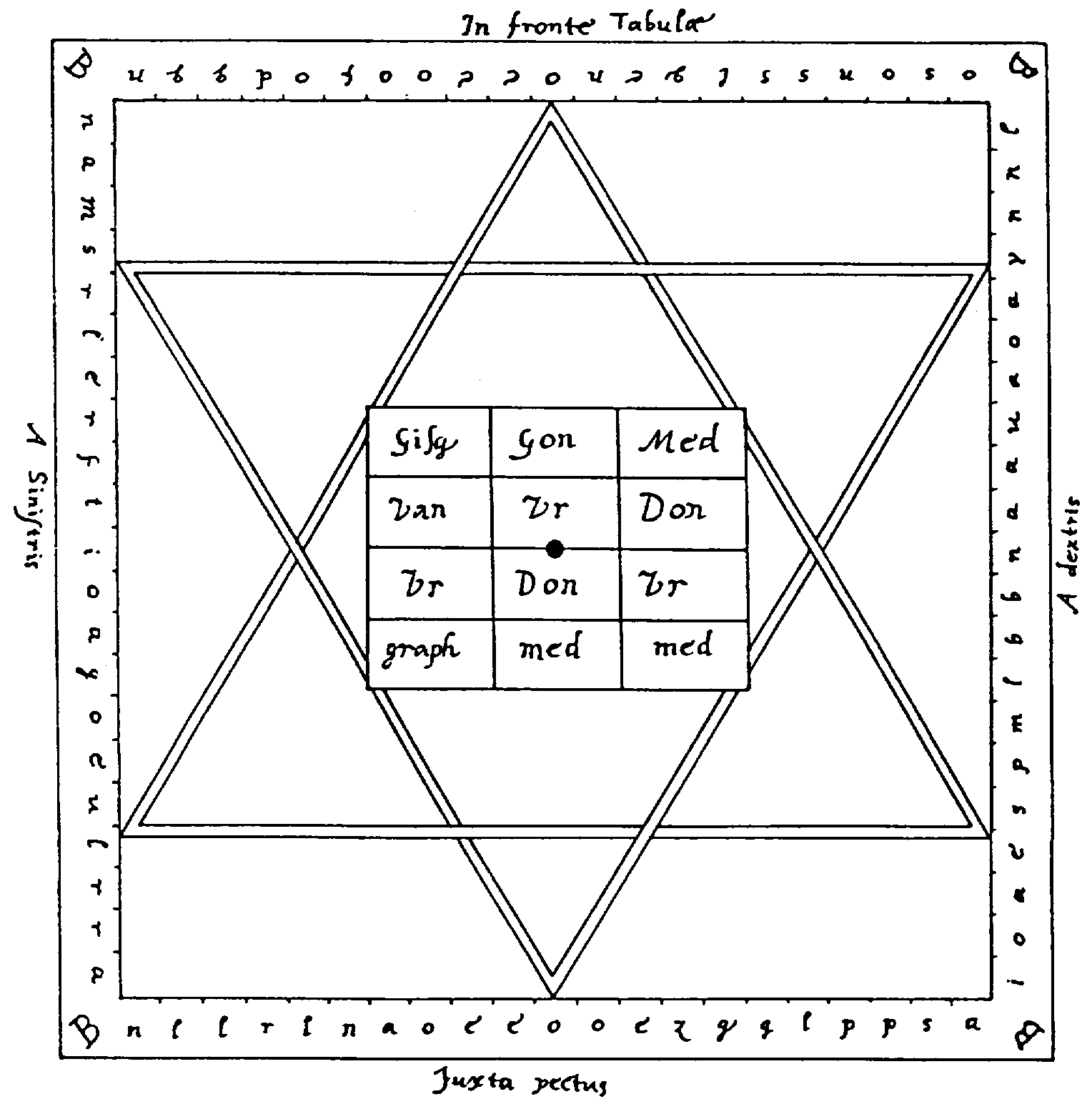
5. Dee and Peterson, 2003, p. 397. Iuxta pectus ("next to the chest"); A sinistris ("to the left"); a dextris ("to the right"); etc. Dee notes, "our standing place" is what "I haue used to call in fronte tabulæ".
In the actual table, however, they were to be put into their proper characters (=Enochian alphabet) and written right-to-left, with the tops of the letters facing the center of the table, starting on the side labelled "in fronte tabulae".
My first caveat is that neither Dee's drawing in Sloane ms. 3188, nor the engraving in Casaubon exhibit the specified proportions. Dee's drawing however was not intended to be proportional, but merely to show the sequencing of the letters, since he is told "Make a square, of 6 ynches euery way. The border thereof let it be (here) but half an inche: but on the Table it self, let it be an inche broad."
The lettering around this border is taken from an arrangement of the names of the Kings and princes of spirits, whose names all begin with "B", such as Baligon, Bornogo, and Bobogel. Thus the top border, labelled "in fronte tabulae" starts with "osonssl", taken from the right-most column of the table (see below). The 12 letters in the center (bordered by a square of six inches) are from the center (or "heart") of the same table:
a l i g o n,o r n o g o o b o g e l,e f a f e s a b a l e l,u t m o n o y n e p o r,l i s d o n n a s p o l,r o r g e s n a p s e n,r a l g e s l u m a z a,a g e n o l |
The lettering is to be contiguous as shown by the lines drawn from the end of each column to the beginning of the next:
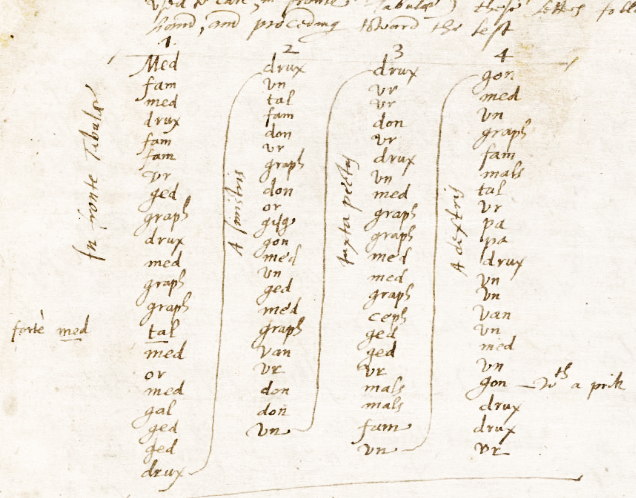
Not all letters of the alphabet are represented in this scheme; specifically, veh, na, ger, pal (c, h, q, x) are not included, so it would not function as a spirit (or ouija) board, as sometimes suggested.
The spirits (or angels) were quite clear that the letters were to be rendered in the Enochian script, which is written from right to left (like Hebrew). Also, the tops of the letters should face the center of the table.6
6. "The heads [=top] of the letters must be next or towards the center of the square table or figure." (Dee, op. cit. p. 400).
According to Ashmole's description, Dee's actual table had Enochian script in red painted on a gold background, between two blue lines. The seven sigils, or "ensigns of Creation" were also painted with red letters and blue lines. The lines of the hexagon were gold, and the central square had gold letters and blue lines (op. cit. p. 23).
Dee's summary of the instructions, in Heptarchia Mystica states that the "Sigillum Aemeth is to be set in the myddle of the Table." On top of this sigillum, "with the frame," should rest the scrying stone. The 4 legs each rest on smaller wax Aemeth sigils, but with "hollow things of sweet wood" to protect them from damage.
Furthermore,
Under the Table did seame to be layde red sylk two yards square. And over the Seale, did seame likewise red Silk to lye fowr-square: broader then the Table, hanging down with 4 knopps or Tassels, at the 4 Corners therof.
Uppon this uppermost red Sylk, did seme the Stone with the frame,7 to be set: right over and uppon the Principall Seale: Saving that the red Sylk, was betwene the one, & the other.
Δ - There appeared the first Table covered, with a cloath of Sylk changeable cullour, Red & greene, with a white Cloth under it: all hanging very low.
7. Dee's drawing of the stone and its elaborate frame can be found in Sl. 3188, Dec 22, 1581.

It is probably the same one described by William Lilly as the size of a large orange, "set in silver, with a cross on the top, and another on the handle; and round about engraved the names of these angels, Raphael, Gabriel, Uriel." (See Dee, op. cit. pp. 19-20.)
Elsewhere it is said the silk "must be of diverse colors — the most changeable that can be gotten."
The 7 lamins, or "ensigns of Creation", are to be engraved on tin, and "laid before thee upon the table, or thou maist place them (if thou wilt) continually at the 7 angles of the holy seal." They can also be painted on the table, 7 inches from the outer edge of the holy seal. (op. cit. p. 400.) They are symbols of the biblical 7 days of Creation.
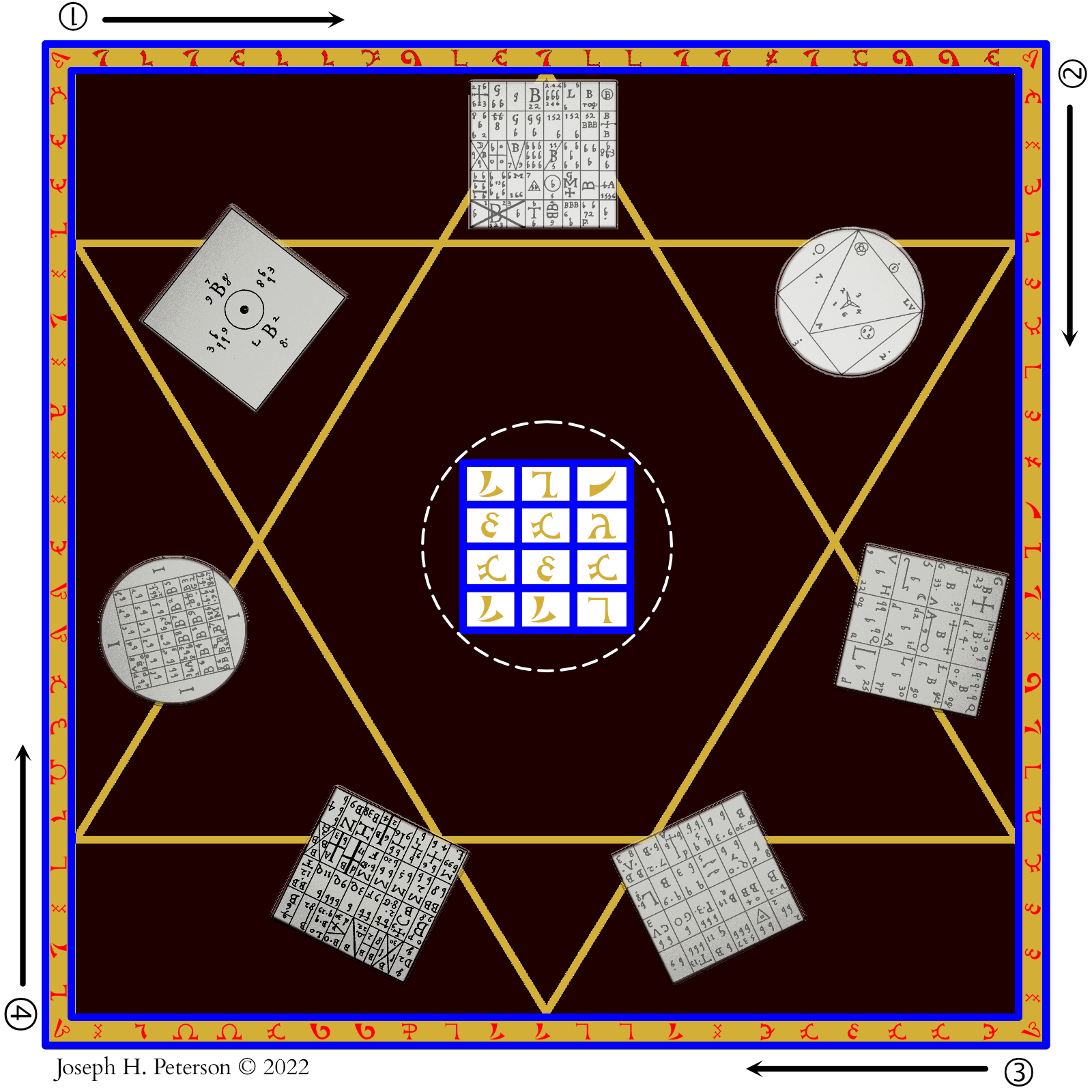
 Corrected:
Corrected: 
